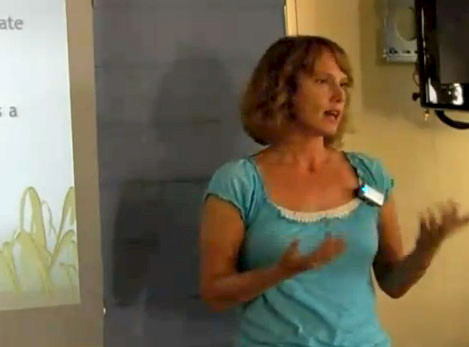Discussion following Megan Ward seminar on Nanticoke Watershed Alliance: A New Model for Conservation
Bill Dennison ·This blog post discusses the seminar given by Megan Ward of the Nanticoke Watershed Alliance, at the IAN Seminar Series on September 28, 2010.
The Nanticoke River conservation efforts have focused on protection, rather than restoration, reflecting its rural and relatively intact watershed. Megan made it clear that the Nanticoke Watershed Alliance was more interested in building partnerships than direct advocacy. They were working on a broad outreach program to support eco-tourism, rural land conservation and focusing development in designated growth zones.

A example of a good environmental outcome for the Nanticoke watershed was when The Nature Conservancy worked with a Boy Scout camp to protect land in the Nanticoke watershed from sand and gravel mining and timber harvesting. The Nature Conservancy, working with the US Fish & Wildlife Service, were able to create an endowment for development rights, thus preserving 1,400 acres.
There was a discussion about the "Future Search" process of engaging the community. Facilitators trained in this method worked with the Nanticoke Watershed Alliance to carefully choose ~50 people to develop a shared vision for the social, economic and environmental future of the region. The facilitators started by creating a dialog about the current conditions, and then creating a matrix of different issues and different groupings of people. Quality of life issues emerged as the overriding theme, and a major concern in this rural region was the 'brain drain' of young people leaving for better employment opportunities elsewhere. Another overriding concern was the decoupling of people from the local natural resources--a loss of 'sense of place'.
Another aspect of Future Search that was elucidated when questioned about how the Future Search process differs from normal planning processes was the lack of predetermined vision in Future Search. The vision was created by a truly involved and engaged community, representing diverse public input and a wide range of stakeholder opinions. Megan recommended using this whole community approach to other river keeper and waterkeeper groups. Their experience with this process was that it diversified the people engaged in environmental issues also created new partnerships (e.g., creating a 'big tent'). The transition from "We can't afford to do it" to "We can't afford NOT to do it" was an important moment in the thought process.
The three core counties of the Nanticoke River watershed are Dorchester and Wicomico Counties, Maryland and Sussex County, Delaware. The cities of Cambridge and Salisbury are largely in different watersheds, so only small towns are within the Nanticoke watershed. The Route 13 corridor in Delaware is a growth area within the watershed, as well as expansion of Cambridge and Salisbury as regional growth centers is likely.
One of the thoughts that emerged from the visioning workshops was that by appealing to universal concepts like quality of life, everyone could find meaning in the discussion. Megan expressed her amazement at the way seemingly opposing sectors (like agriculture, forestry and development) could work effectively together.
About the author
Bill Dennison

Dr. Bill Dennison is a Professor of Marine Science and Vice President for Science Application at the University of Maryland Center for Environmental Science.

